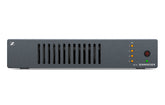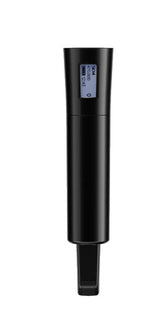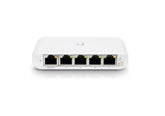Wi-Fi 6 vs. 5G: Which is Best for Your Business?
Introduction: The Wireless Battle for Business Connectivity
By 2025, it’s estimated that over 75 billion connected devices will be in use globally—an explosion fueled by IoT, hybrid work, and smart infrastructure. That means your business’s wireless strategy isn’t just about speed anymore. It's about scalability, security, and efficiency.
Two contenders are at the forefront of this wireless revolution: Wi-Fi 6 and 5G. Both offer significant improvements over their predecessors—but which one makes more sense for your business?
In this guide, we’ll break down what Wi-Fi 6 and 5G actually are, how they perform in real-world business environments, and the pros and cons of each. Whether you run a tech startup, retail chain, or warehouse facility, understanding this comparison is key to building a future-proof wireless infrastructure.
What Are Wi-Fi 6 and 5G?
What Is Wi-Fi 6?
Wi-Fi 6 (also known as 802.11ax) is the latest generation of Wi-Fi, designed to provide higher speeds, better performance in crowded areas, and improved battery efficiency for connected devices. It builds on previous Wi-Fi standards but introduces new technologies like OFDMA (Orthogonal Frequency-Division Multiple Access) and Target Wake Time to optimize performance.
-
Speed: Up to 9.6 Gbps (combined theoretical speed across multiple channels)
-
Range: Best suited for indoor environments like offices, warehouses, and campuses
-
Infrastructure: Requires a modern router and compatible devices
What Is 5G?
5G (fifth-generation cellular network) offers low-latency, high-speed mobile connectivity and is the successor to 4G LTE. Built to handle mobile data demands, it delivers fast speeds, real-time communication, and wide coverage using small cell towers and existing cellular infrastructure.
-
Speed: Up to 10 Gbps (with ultra-low latency <1ms)
-
Range: Covers wide geographic areas; ideal for mobility and outdoor environments
-
Infrastructure: Requires carrier service, SIM cards, and 5G-compatible devices
Benefits and Use Cases for Businesses
Both Wi-Fi 6 and 5G offer distinct advantages depending on your environment, industry, and application needs. Let’s explore how each wireless solution supports specific business goals.
Wi-Fi 6: Designed for Dense, Controlled Environments
Best Use Cases:
-
Corporate offices
-
Warehouses and logistics centers
-
Smart buildings and campuses
-
High-device density areas (e.g., conference halls, classrooms)
Benefits:
-
Improved capacity: Handles dozens (or hundreds) of devices with minimal congestion
-
Lower latency: Smooth video conferencing, VoIP, and cloud collaboration
-
Security: WPA3 protocol offers enhanced network protection
-
Cost-effective: Once infrastructure is installed, no recurring carrier fees
5G: Built for Mobility and Real-Time Applications
Best Use Cases:
-
Field operations and mobile workforces
-
Smart cities and outdoor surveillance
-
Autonomous vehicles or drones
-
Pop-up locations or remote job sites
Benefits:
-
Mobility: Maintain connection on the move, even at high speeds
-
Ultra-low latency: Crucial for time-sensitive applications like automation or telemedicine
-
Wide coverage: Access connectivity in areas without fiber or structured cabling
-
Fast deployment: No need to run physical wires or install routers
Explore business-ready networking and connectivity solutions at SportsGeekUSA.
Challenges and Considerations
Even with all the promise, choosing between Wi-Fi 6 and 5G isn’t always straightforward. Each comes with its own set of trade-offs.
Deployment Costs
-
Wi-Fi 6: Requires upfront investment in routers, switches, and sometimes cabling upgrades.
-
5G: Involves carrier service plans, potentially higher data costs, and licensing for private 5G networks.
Tip: For budget-conscious businesses, Wi-Fi 6 is typically more cost-effective indoors.
Device Compatibility
Not all devices support Wi-Fi 6 or 5G out of the box.
-
Wi-Fi 6: Backward-compatible with older Wi-Fi devices, but you'll only get full benefits with newer hardware.
-
5G: Requires 5G-capable modems, routers, or mobile devices. May need SIM cards or eSIM provisioning.
Solution: Check compatibility across your fleet before committing to one standard.
Network Control & Security
-
Wi-Fi 6: Gives businesses full control over the network. Firewalls, VLANs, and access control are easily managed on-premises.
-
5G: Typically managed by carriers—unless you deploy a private 5G network, which requires licensing and more complex setup.
Recommendation: Businesses with strict compliance or privacy requirements may prefer the control of Wi-Fi 6.
Performance in Different Environments
-
Wi-Fi 6: Performs best indoors or within a defined facility.
-
5G: Shines in outdoor, mobile, or temporary setups.
Real-World Example: A manufacturing facility may use Wi-Fi 6 inside for employee devices and robotics, but use 5G for autonomous forklifts that move between buildings or zones.
How to Choose: Wi-Fi 6 or 5G?
Choosing the right wireless solution comes down to four main questions:
1. Where Will It Be Used?
-
Wi-Fi 6 is ideal for indoor, stationary environments like offices, schools, and stores.
-
5G is better for outdoor, mobile, or large-area coverage like farms, construction sites, or logistics hubs.
2. What’s the Density of Devices?
Wi-Fi 6 is optimized for high-density environments where many devices compete for bandwidth (think open offices, retail floors, or auditoriums).
5G works well when devices are dispersed or need constant connectivity while moving (like delivery fleets or wearable IoT).
3. Do You Need Full Network Control?
Wi-Fi gives you complete control over security, bandwidth, and device access. 5G, on the other hand, is typically managed by a telecom carrier, unless you invest in a private 5G deployment.
4. How Important Is Latency?
-
Both offer low latency, but 5G Ultra Wideband can deliver under 1ms latency—ideal for real-time automation, VR/AR, or remote surgery.
-
Wi-Fi 6 also offers sub-10ms latency, more than sufficient for video calls, cloud software, and VoIP.
Best Practices for Implementation
Whether you choose Wi-Fi 6, 5G, or both, here’s how to ensure a smooth rollout:
Start with a Site Survey
Identify your network traffic needs, physical layout, interference zones, and device types. This helps determine signal strength needs and access point placement.
Invest in Future-Proof Hardware
Look for:
-
Wi-Fi 6 Certified routers with MU-MIMO and OFDMA support
-
5G routers or hotspots with support for Sub-6 GHz and mmWave frequencies
-
Networking hardware with support for VLANs and PoE for efficient installations
Implement Redundant Coverage
If downtime is critical to your operations, consider blending Wi-Fi 6 and 5G for seamless failover. A hybrid network allows users to switch between networks based on load or signal strength.
Secure Your Wireless Environment
-
Use WPA3 encryption on Wi-Fi 6 networks
-
Deploy VPNs and firewalls on both network types
-
Monitor traffic using cloud-managed network tools
Train Your Team
Make sure employees know how to connect securely, report connectivity issues, and follow best practices for using business-critical apps over wireless networks.
FAQs
Can Wi-Fi 6 and 5G work together?
Yes. Many modern business setups use Wi-Fi 6 for internal operations and 5G as a backup or for mobile teams. Hybrid strategies offer the best of both worlds.
Is Wi-Fi 6 faster than 5G?
It depends on the environment. Wi-Fi 6 can reach up to 9.6 Gbps under ideal conditions. 5G can exceed 10 Gbps in some areas, but real-world speeds depend on congestion and signal strength.
Is 5G more secure than Wi-Fi?
5G has strong built-in encryption, but Wi-Fi 6 with WPA3 and enterprise controls can offer equivalent or superior protection, especially on private networks.
Conclusion: Which Wireless Solution is Right for You?
When comparing Wi-Fi 6 vs. 5G, the choice isn’t about which is “better”—it’s about which is better for your specific business needs.
-
Choose Wi-Fi 6 if you're upgrading internal infrastructure for high device density and control.
-
Choose 5G if mobility, wide coverage, or quick deployment is your priority.
-
Choose both if you want resilient, flexible connectivity across various environments.
No matter your choice, what matters most is building a reliable wireless strategy that aligns with your business goals—and keeps you competitive in a connected world.
Ready to build your wireless network the right way?
Check out our networking and connectivity solutions at SportsGeekUSA, where we carry hardware built for performance, scalability, and security.











